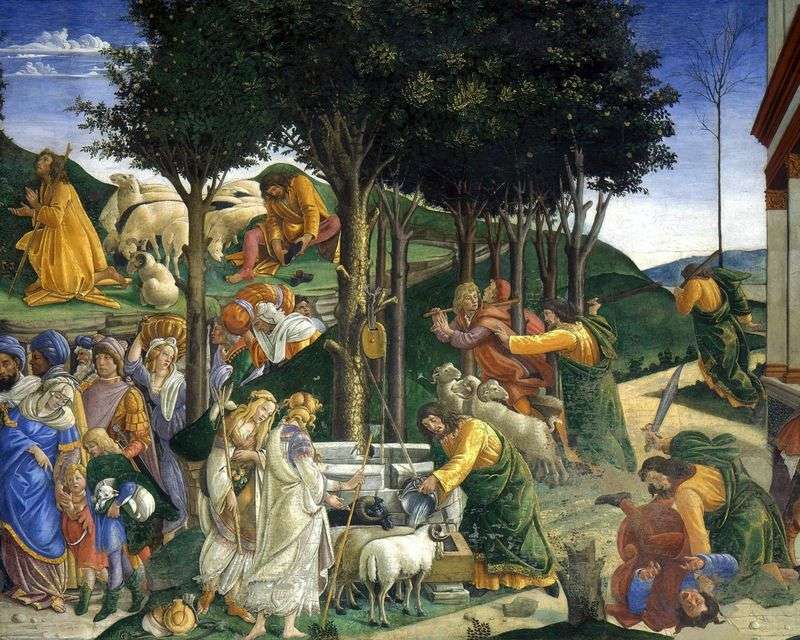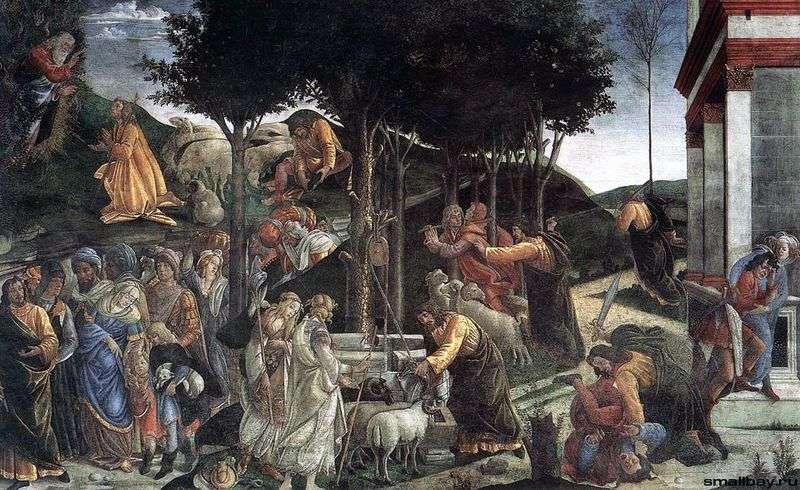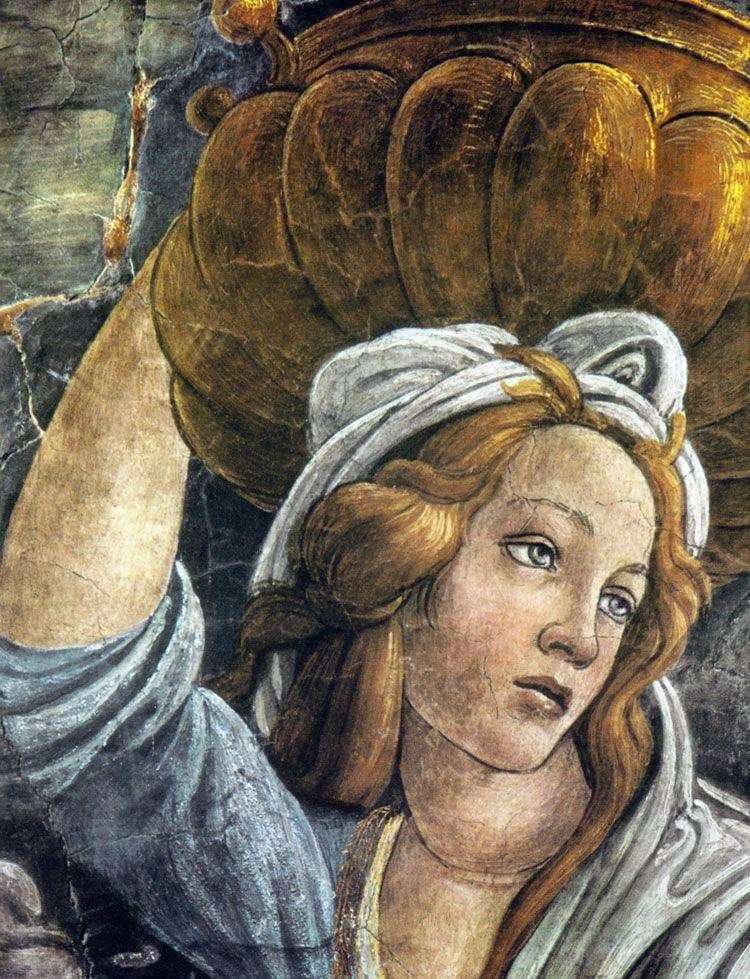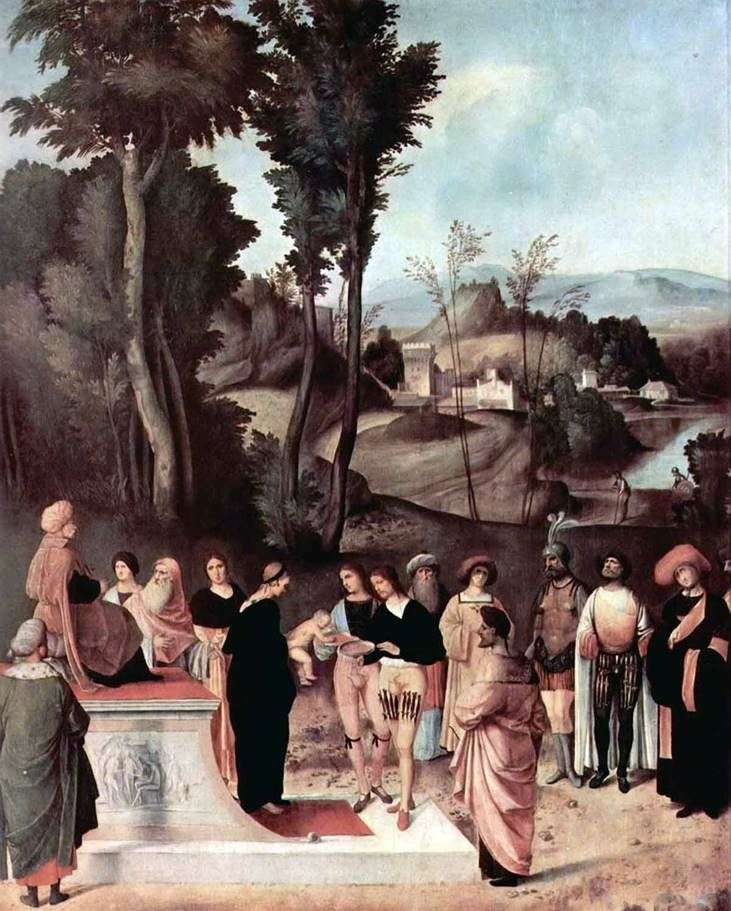
October 27, 1480 Botticelli, along with other Florentine artists, Domenico Ghirlandaio and Cosimo Rosselli, came to Rome, where they were invited to participate in the reconciliation project between Lorenzo de ‘Medici, the de facto ruler of the Florentine Republic and Pope Sixtus IV. In the spring of 1481 the Florentines began work in the Sistine Chapel, together with Pietro Perugino, who started work earlier.
The theme of the painting was a parallel between the stories of Moses and Jesus Christ, as a symbol of continuity between the Old and New Testaments, and also the continuity between the law given to Moses and the message of Jesus, who in turn chose St. Peter as his successor: this was to serve as a proclamation legality of the heirs of St. Peter – the Roman popes.
This is the second of the frescoes included in the History of Moses, located on the left wall of the chapel, opposite the fresco “Temptation of Christ”, also belonging to the brush of Botticelli. The inscription on the frieze, which crowns the mural, reads: TEMPTATIO – MOISI – LEGIS – SCRIPTAE – LATORIS.
The fresco shows several episodes from the life of Moses, described in the Book of Exodus. On the right, Moses kills an Egyptian overseer who has mocked the Jews, and leaves for the wilderness. In the center, Moses helps the daughters of Jethro, driving away the shepherds who did not let the girls to the well. In the upper left corner, a scene is depicted where Moses takes off his shoes and hears God’s command to return to Egypt and free his people. [1] In the lower left corner of the fresco Moses leads the Jews to the Promised Land. In all episodes Moses is easily recognizable by his yellow-green clothes, on the other frescoes of the chapel he is dressed likewise.
 Scenes from the life of Moses (fresco) by Sandro Botticelli
Scenes from the life of Moses (fresco) by Sandro Botticelli Daughter of Jethro (fragment) by Sandro Botticelli
Daughter of Jethro (fragment) by Sandro Botticelli The Temptation of Christ by Sandro Botticelli
The Temptation of Christ by Sandro Botticelli Transformation by Sandro Botticelli
Transformation by Sandro Botticelli The Healing of the Leper and the Temptation of Christ by Sandro Botticelli
The Healing of the Leper and the Temptation of Christ by Sandro Botticelli Portrait of a young man by Sandro Botticelli
Portrait of a young man by Sandro Botticelli Punishment of Korea Dafan and Abiron by Sandro Botticelli
Punishment of Korea Dafan and Abiron by Sandro Botticelli The Test of Moses by Fire by Giorgione
The Test of Moses by Fire by Giorgione